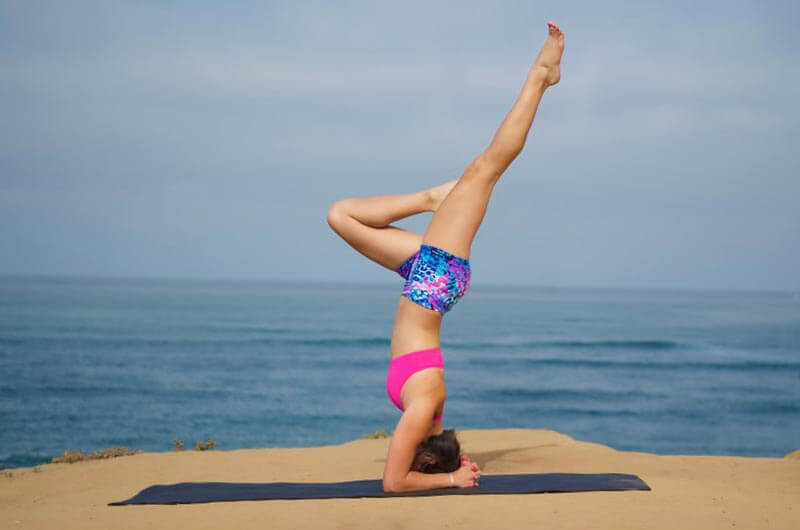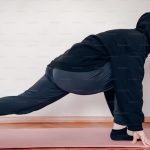Think Back To Your First Few Months Doing Yoga, And One Day Your Instructor Said That Particular Class Will Be About Headstands. Did You Feel Scared To Be Upside Down On Your Head? Did You Wonder Why, When It Seemed So Simple And Easy When You Were A Kid? Well, It’s Actually Because You Are Programmed Not To Like Being Upside Down.
WHY IS IT SO SCARY BEING UPSIDE DOWN?
There’s actually scientific answer as to why it’s scary for most people to be in an inversion! Most say it’s because they simply aren’t strong enough, but muscular strength is just one part of it; you need a strong brain too! Getting that strong brain isn’t impossible, but it does take a bit of retraining…
As creatures of habit we tend to stick with what feels comfortable to us, which for a majority of people is staying upright. If we don’t get out of our comfort zone, our brain will never adapt to something different. We have to retrain ourselves to become more comfortable with our new habits. Just like we build muscle memory in poses and in everyday actions, we must do the same for learning to be comfortable upside down.
Gymnasts, for example, are extremely comfortable being upside down from doing all those crazy acrobatics. From a young age, they are taught to be comfortable with being upside down but then as adults most of us learn to stay upright. This often happens because we take an awful tumble, and we don’t usually want to do that again.
HOW BALANCE WORKS
Have you noticed that when you walk on a slanted surface you automatically tilt your head so it’s level with the ground? This is the work of the three sensory inputs sending signals to your brain to keep you balanced: vestibular, visual, and proprioceptive. The vestibular system combines equilibrium, spatial awareness, rotation, and linear movement. Visual is everything taken in by sight, and proprioceptive is touch, anything taken in by the skin, muscles and joints. These three systems work together to keep you upright.
Now, flip yourself upside down and your brain has to work overtime processing the information backwards in order to keep you balanced. As scary as this may be for most people, studies have proven that forcing yourself to think in a different way than you’re used to helps your brain create new pathways, makes your brain more efficient, and improves memory retention.
Another study at MIT showed that by being upside down and allowing more blood to flow into your brain, it activates the rest of your body. So when the part of your brain corresponding to your middle finger is affected in this way, you could feel a slight tap on your finger as that section of the brain is energised.
GET USED TO BEING UPSIDE DOWN
There are several different ways you can get used to being upside down. The most obvious way is, to quote Nike, to “Just Do It,” but there are much gentler ways to easing into becoming comfortable upside down. Try these poses on for size, and don’t forget to make sure your breath stays even and level before you move on.
This simple pose can be treated as an inversion. By simply letting your head hang below your heart, it will give you the sensation of feeling that you are upside down. It will also help build strength in your arms, shoulders, and core to help you feel stable.
Amp It Up: Raise one leg up to find a three legged dog to challenge your balance and sense of inversion!
Try this pose with your hands clasped behind your back, reaching them back and up. This gives you a slightly more of a feeling of being upside down, giving you the unstable feeling and relying on your core and legs to keep you grounded.
3.DOLPHIN POSE
This shoulder opening pose is the closest you will feel to being in a headstand or forearm stand without truly having your feet leave the ground!
Amp It Up: Raise one leg up to again challenge your balance more. This will also be your starting position to get up into a forearm stand.
Many people fear their arms are not strong enough to hold them in an inversion. Chaturanga helps you to build that strength!
5. CROW POSE (BĀKĀSANA)
Arm balances are a fantastic prep for inversions, because they activate all the muscles you’ll need to get to the more developed poses, including places you wouldn’t normally think to engage like your inner chest! This pose especially will help you to start feeling confident being on your hands.
THE SKY’S THE LIMIT
As you progress from these poses into exploring inversions, make sure you’re practising safely. Ensure you have enough space so you won’t land on anything that might injure you, and if it’s your time of month, ladies, make sure you’re making an informed decision to go upside down during a period.
Be sure to practice near or against a wall. The wall won’t be going anywhere, and can be your guide into feeling comfortable in an inversion. Take note of how you feel and what changes. I’d love to hear your stories and progress — and do let me know what other poses you find helpful on your way to full inversions!













